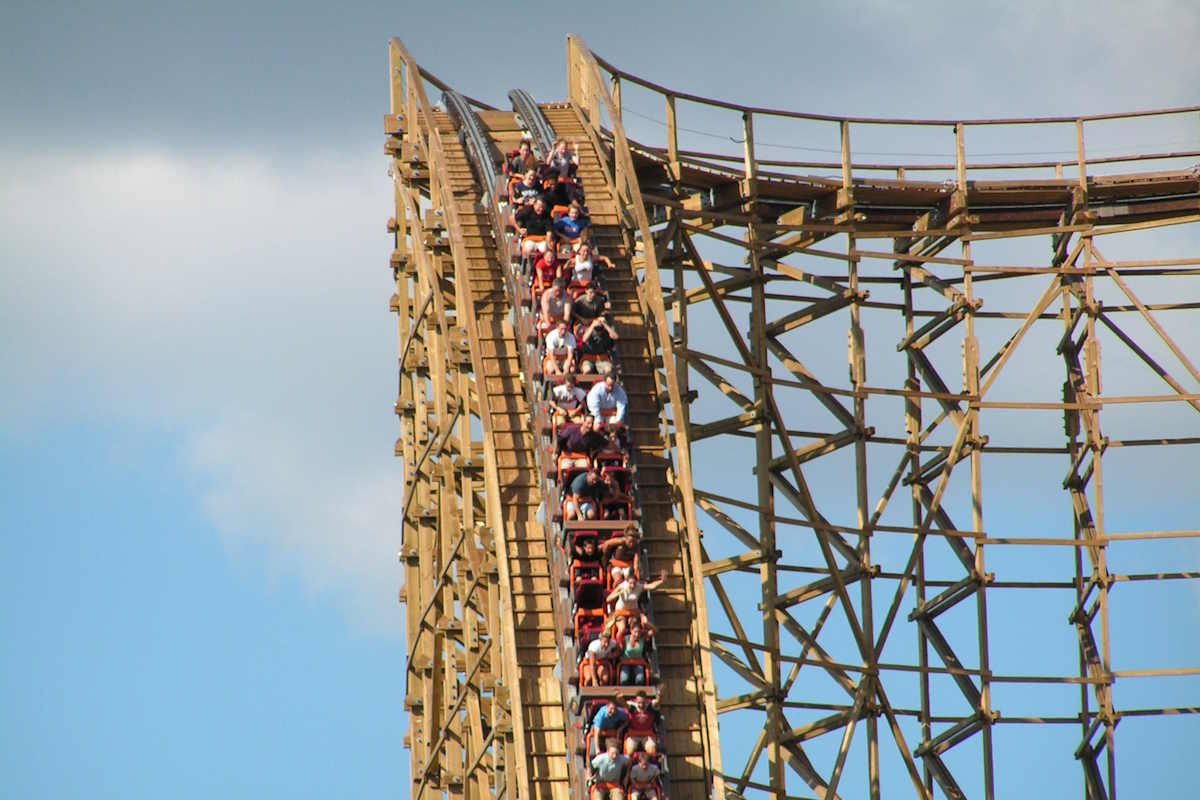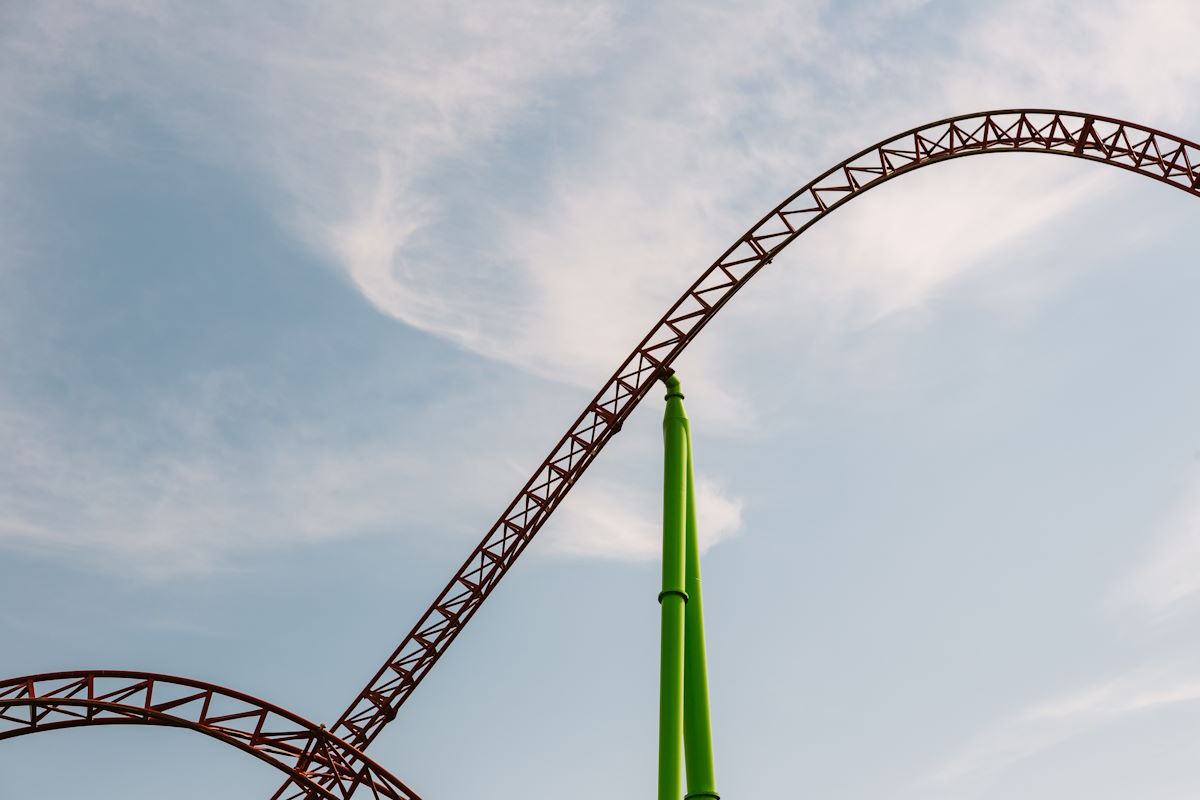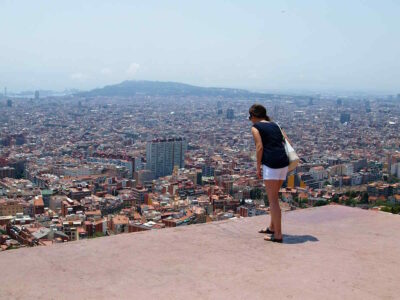If you’re planning a trip to your local amusement park, then you might expect your heart to start racing a little. However, if you have a phobia of heights, that adrenaline rush could be supplanted by outright terror. If you’re finding that your fear of heights is stopping you from enjoying roller coasters, then this is the article for you.
Below, we’ll dive into the connection between a fear of heights and an aversion to roller coasters. We’ll also explore why some people are afraid of one but not the other. After that, we’ll round things off by showing you the steps to take to start overcoming your phobia for good. Let’s ride!
What are the links between acrophobia and roller coasters?
It’s not too difficult to understand why a fear of heights may lead someone to have trouble riding a roller coaster—they are (often, at least) very tall! Indeed, some coasters are over 100 metres in height.
More importantly, the entire point of many roller coasters is to create a perception of danger. Even though riders are secured in their seats, you can’t help but be aware of just how high up you are. And when you’re at the top of the lift hill, you’re meant to feel like you’re about to fall.
All of this causes your body’s fight or flight reaction to kick in, leading to surging adrenaline levels. Then, when you actually do complete the drop, the high speed you’re travelling at contributes further to that sense of thrill.
However, if you have a severe phobia of heights, then you may be too anxious to experience this feeling of heady excitement. Instead, you might find yourself panicking about how high up you are, how exposed you feel, and the risk of falling for real. This last point is particularly relevant given that many people’s fear of heights is actually a fear of falling.
Can you be afraid of heights but not roller coasters?
While a fear of heights seems to go hand in hand with a fear of roller coasters, not everyone with one of these phobias experiences the other.
People with acrophobia will find that their fear is triggered by a number of different scenarios, and what one person finds highly triggering may not affect someone else at all. For example, some acrophobes may find getting on an aeroplane terrifying, while others are afraid of heights but not of flying.
Meanwhile, others may simply have spent so much time on roller coasters that their fear is no longer triggered by this, even though they still experience symptoms of acrophobia in other situations.
Conversely, some people may be afraid of roller coasters for reasons that are entirely unrelated to heights. Instead, their fear may be linked to other conditions such as agoraphobia or emetophobia.
Overcoming your fears

When your phobia is preventing you from making the most of a fun day out, it can be all too tempting to slip into avoidant behaviour. However, doing so will only reinforce your fear. This can make it even more difficult for you to cope in situations involving heights in the future.
Instead, you should work to break the cycle of fear and confront your phobia. Doing so will enable you to do more than just ride your favourite coasters again—it can also help you to establish a healthier relationship with heights. Here are some of the top ways to tackle your fear of heights on roller coasters.
Exposure therapy
One of the most effective ways of dealing with a fear of heights on roller coasters is to face your fear head-on and get on the ride! This is known as exposure therapy, and, as the name suggests, it involves exposing yourself to the thing you’re afraid of in order to prove to yourself that it’s not as bad as you had feared.
Things do get a little more complex when dealing with roller coasters, as you’re exposing yourself to something that is designed to induce fear. However, the important thing to realise is that even though you might feel afraid, in reality, you’re perfectly safe.
Taking some time to familiarise yourself with some of the statistics around amusement park safety, as well as talking to others about their experiences on roller coasters, can help to allay your fears.
When it comes time to get on the ride, bring a supportive friend with you. Don’t feel the need to get on the scariest coaster in the park straight away—start with something you feel is manageable, and work up from there. And don’t be afraid to scream!
Virtual reality
If visiting an amusement park isn’t convenient for you, or you need a little practice before going for the real thing, then virtual reality exposure therapy could be a useful option to consider. This works in much the same way as regular exposure therapy, but from the comfort of your own home.
Choosing this route will see you strapping on a VR headset and experiencing a roller coaster ride virtually. You can choose to buy a specific game, or simply watch a free video on YouTube, such as the one we’ve embedded below.
If you don’t have a VR headset handy, then try to look out for 360° videos such as the one above. These will enable you to ‘look around’ your virtual surroundings, getting you as close as possible to experiencing the ride while using a flat screen.
Talking therapies
While exposure therapy is considered to be one of the most effective ways of tackling a fear of heights, it isn’t the only option available to you. Talking therapies have also been shown to be very useful in treating a range of anxiety disorders, including phobias.
One of the most common forms of talking therapy is cognitive behavioural therapy, or CBT. This is a therapy based on the idea that our thoughts shape our feelings, which in turn influence our behaviour. It thus holds that by changing the way you think about something, you can start to modify the way you act. It can be used to treat acrophobia online or in person.
In the case of a fear of heights on roller coasters, your initial thought may be something like: “If I go on this ride, I could plummet to my death”. This then causes you to feel intense levels of fear before deciding to avoid going on the roller coaster.
CBT encourages you to replace that initial negative thought not with unbridled positivity but instead with realism. After your CBT sessions, your thought may instead be this: “This roller coaster is very high up, but there are rigorous safety standards in place to make sure that I won’t fall. I’m sure that I will feel scared, because it’s designed to be scary—but there isn’t any actual danger.” You can then begin to feel more at ease, which in turn will encourage you to give the ride a go.
Fear of heights and roller coasters: Summary

As we’ve discussed, it’s not surprising to learn that many people with acrophobia are reluctant to go on a roller coaster. However, there’s no need to let fear hold you back. There are a number of treatment options that can help you to overcome your phobia and start enjoying the thrills of a great theme park ride once again.
If you’re interested in tackling your fear of heights, be sure to check out the Climb Above Fear acrophobia programme. Over six sessions with a BACP-registered therapist, you’ll gain helpful coping mechanisms that will come in handy in everyday situations involving heights, and will learn how to reframe your thoughts so that you can break free from fear.



